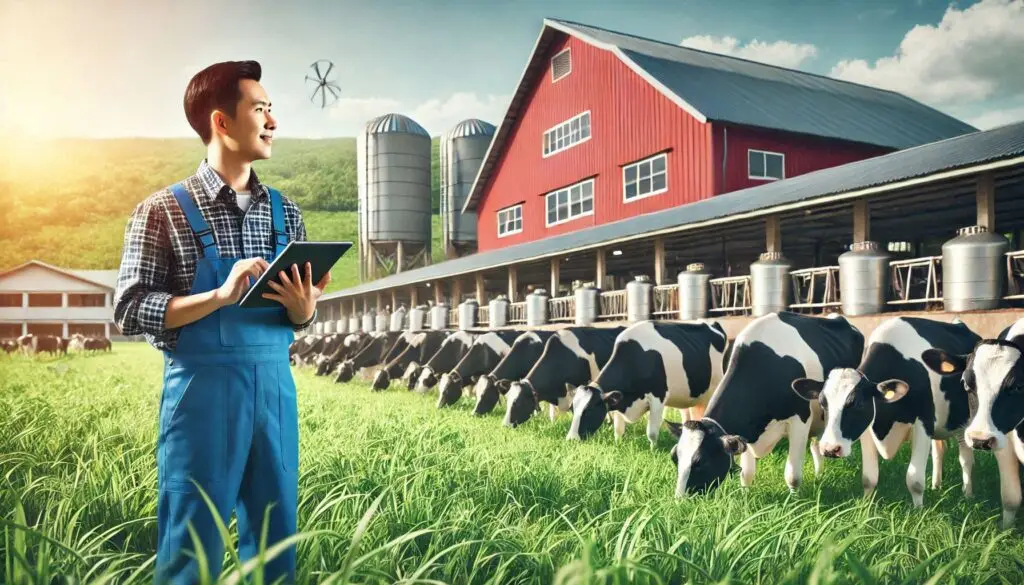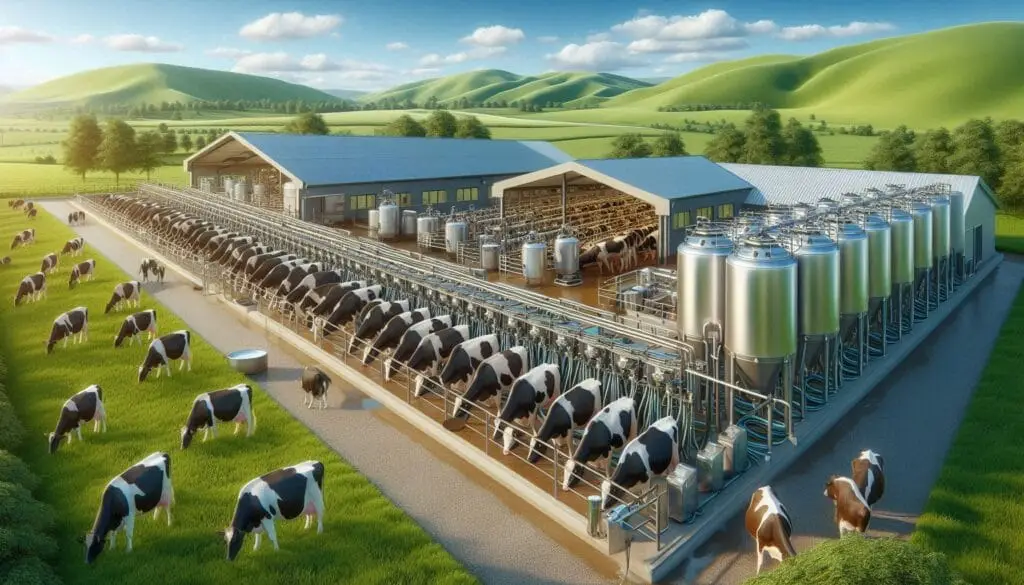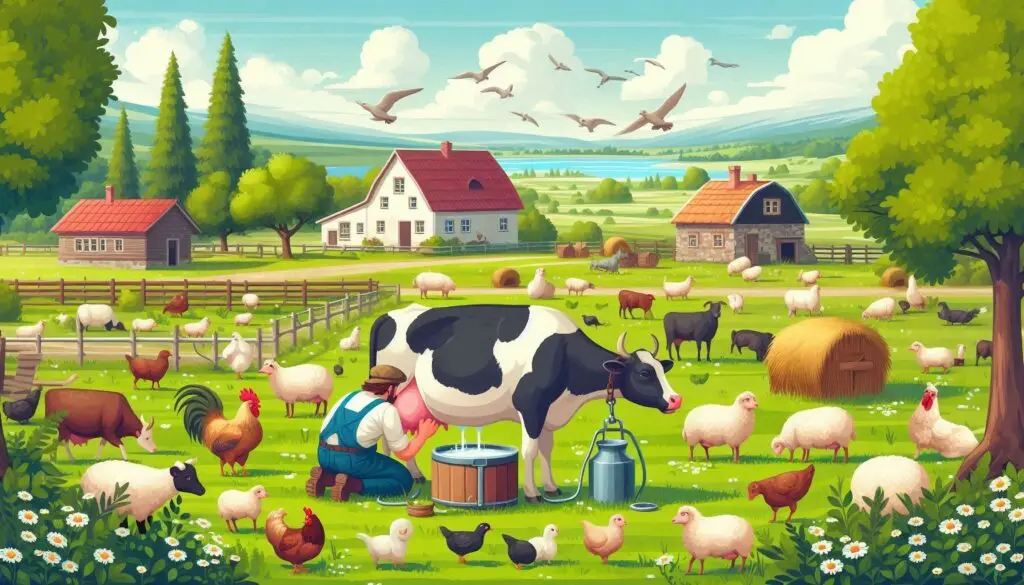Feed and fodder requirements of Dairy Farm

Introduction
Dairy farming is complex and requires careful attention to animal nutrition. Proper feeding of dairy cattle is crucial for their health and milk production. It also maximizes the profitability of the dairy farm. In this guide, we will explore the feed and fodder requirements for dairy cattle. We will cover the essential components of a balanced diet and provide practical feeding recommendations.
Importance of Balanced Nutrition
A balanced diet is vital for dairy cattle. It helps maintain health, supports growth, and sustains high milk production levels. Dairy cows need various nutrients, including carbohydrates, proteins, fats, minerals, vitamins, and water. These nutrients must be in appropriate quantities. Imbalances or deficiencies can lead to health issues and reduced productivity, resulting in economic losses for farmers.
Components of a Balanced Diet
A balanced diet for dairy cattle typically includes:
- Green Fodder: This is a crucial component of the diet. It provides essential nutrients like protein, energy, and fiber. Dairy cows need about 15-20 kg of green fodder daily. The ideal ratio of leguminous to non-leguminous green fodder is 1:3 to maximize protein intake.
- Dry Fodder: Dry fodder, such as straw from various grains, is also important. It adds fiber and contributes to overall dry matter intake. Dairy cattle typically require around 6 kg of dry fodder each day.
- Concentrates: Concentrate feeds are essential for energy and protein. The amount needed varies based on the stage of production. For maintenance, indigenous cattle need about 1.25 kg, while crossbred cattle require 2.00 kg. During lactation, an additional 0.4 kg of concentrate is needed for every liter of milk produced.
- Minerals and Vitamins: These supplements support metabolic functions and ensure optimal health. Area-specific mineral mixtures address local deficiencies.
- Water: Water is the most important nutrient. Dairy cattle need free access to clean water for optimal production. They require 3-4 liters of water for each kg of dry matter consumed, plus an additional 3 liters per kg of milk produced.
Feeding Requirements Based on Production Stages
The feed and fodder requirements for dairy cattle vary depending on their production stage. Here’s a breakdown:
Maintenance
- Indigenous cattle: 4-5 kg straw/dry fodder, 1.25 kg concentrate
- Crossbred cattle: 4-6 kg straw/dry fodder, 2.00 kg concentrate
Milk Production
- Indigenous cattle: 0.4 kg concentrate per liter of milk produced
- Crossbred cattle: 0.4 kg concentrate per liter of milk produced
- Buffaloes: 0.5 kg concentrate per liter of milk produced
Pregnancy and Growth
- Pregnant animals: Additional feed is required. Recommendations depend on weight and growth stage.
- Growing calves: Extra feed is necessary for growing calves, with specific recommendations based on their weight and growth stage.
Feeding Strategies
To optimize feeding programs, dairy farmers can implement the following strategies:
- Chaffing: Chaffing fodder before feeding increases digestibility and reduces waste.
- Total Mixed Ration (TMR): Mixing all feed components into a TMR optimizes nutrient intake. It is advisable to feed this in 3-4 portions throughout the day.
- Urea Treatment: Urea can enhance the nutritional value of dry fodder. It can make it comparable to medium-quality green fodder, improving overall milk yield.
- Gradual Changes: When changing feeds, do so gradually. This avoids sudden disruptions in the animal’s digestive system.
- Supplementation: Provide area-specific mineral mixtures and supplements like Urea Molasses Mineral Blocks. These help address specific nutrient deficiencies and support overall health.
Practical Guidelines for Ration Balancing
Here are practical guidelines for ration balancing in dairy cattle:
- Good quality green fodder (35 kg) and dry fodder (2 kg) can support milk yield up to 5 liters per day per animal.
- Good quality green fodder (35 kg), dry fodder (3 kg), and legumes (5 kg) can support milk yield up to 8 liters per day per animal.
- For medium and high milk yielders (> 8-10 liters per day), concentrate mixture along with green and/or dry fodder will be required.
- As the milk yield increases (>10 kg per day per animal), the proportion of concentrate will increase in the diet. However, to maintain rumen function, a minimum of 25% of dry matter must be supplied with fodder only.
- As a thumb rule, for body maintenance, 1.5 kg (cow) and 1.6 kg (buffalo) of concentrate mixture is required. For every 3 kg of milk production, an additional 1.2 kg (cow) and 1.3 kg (buffalo) of concentrate mixture is required. The remaining nutrient requirement should be met with green fodder and dry fodder.
Conclusion
Proper feeding of dairy cattle is essential for health and optimal milk production. By understanding the components of a balanced diet and the feeding requirements at different production stages, farmers can implement effective feeding strategies. This approach will help optimize the nutrition of their cattle and achieve sustainable success in dairy operations.
For more pearls of Vets Wisdom:






Responses